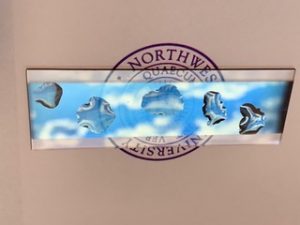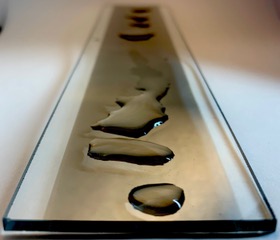- Slug: BC-CNS Rust to Electricity, 490 words.
- 2 photos and captions below.
By Miles Wilson
Cronkite News
LOS ANGELES – Scientists believe they have found a renewable energy source that’s more efficient and cheaper than solar panels: saltwater flowing over rust.
Researchers from California Institute of Technology and Northwestern University have discovered there’s more than one way to generate electricity from moving water. They’ve found that saltwater flowing over rust (iron oxide) results in a kinetic energy that can be converted into electricity. If developed and scaled, that could mean a cheap and efficient form of renewable energy.
“Essentially, the concept of the experiment is like moving a magnet over a window during a rainstorm,” said Franz Geiger, a professor of chemistry at Northwestern in Evanston, Illinois. Moving a magnet on a rain-streaked windowpane displaces the raindrops. A similar science is at play with electrons being pushed and pulled, creating kinetic energy, when saltwater and rust interact.
Geiger said he and fellow researcher Tom Miller, who teaches chemistry at Caltech, have conducted experiments that successfully produced an electrical current.
The process is relatively simple.
Geiger and Miller ran gallons of saltwater over nanolayers – thinner than a potato-chip bag – of rust from iron, vanadium or nickel to generate electrical current.
“The ions present in saltwater attract electrons in the iron beneath the layer of rust,” Geiger said. “Instead of corrosion, the presence of the oxides on the right metals leads to a mechanism that shuttles electrons.”
The process is much more efficient than the best solar panels in today’s solar industry, Geiger said.
The most efficient solar panels have a kinetic energy efficiency rating of 22.8%, although most panels installed on an average home have an efficiency rating of 15% to 18%. Geiger and Miller’s process has a kinetic energy efficiency rate of about 30% when converting the motion energy into electricity.
(Video by Franz Geiger/Northwestern University)
The single-step fabrication process, of simply running salt water over the rust, and availability of materials is what makes this a more scalable and cheaper process than other technological forms of kinetic energy, the researchers said.
“Plates having an area of 10 square meters each would generate a few kilowatts per hour – enough for a standard U.S. home,” Miller said. “Of course, less demanding applications, including low-power devices in remote locations, are more promising in the near term.”
The process can be adapted to many applications because “anytime you have moving water, there are opportunities for energy conversion,” Miller said. “For example, tidal energy or things bobbing in the ocean, like buoys, could be used for passive electrical energy conversion.”
Beyond the oceans, the human body could play a role in generating energy, too.
“You have saltwater flowing in your veins in periodic pulses, right?” Miller asked, rhetorically. “Well, that could be used to generate electricity for powering implants.”
With more funding and research, Miller and Geiger said the technology can be developed into a power generating source for homes, appliances and implants.
For more stories from Cronkite News, visit cronkitenews.azpbs.org.
^_=

